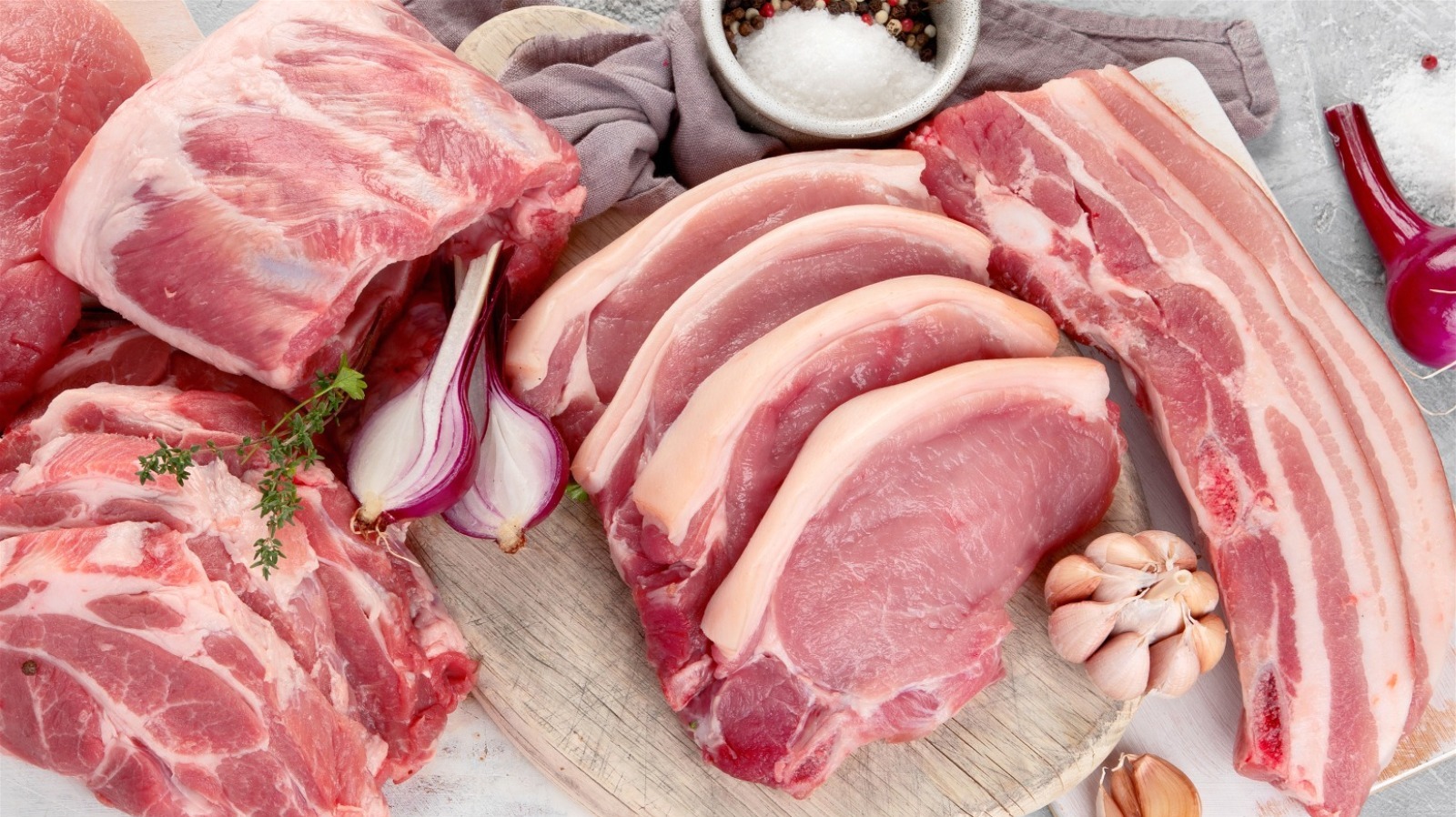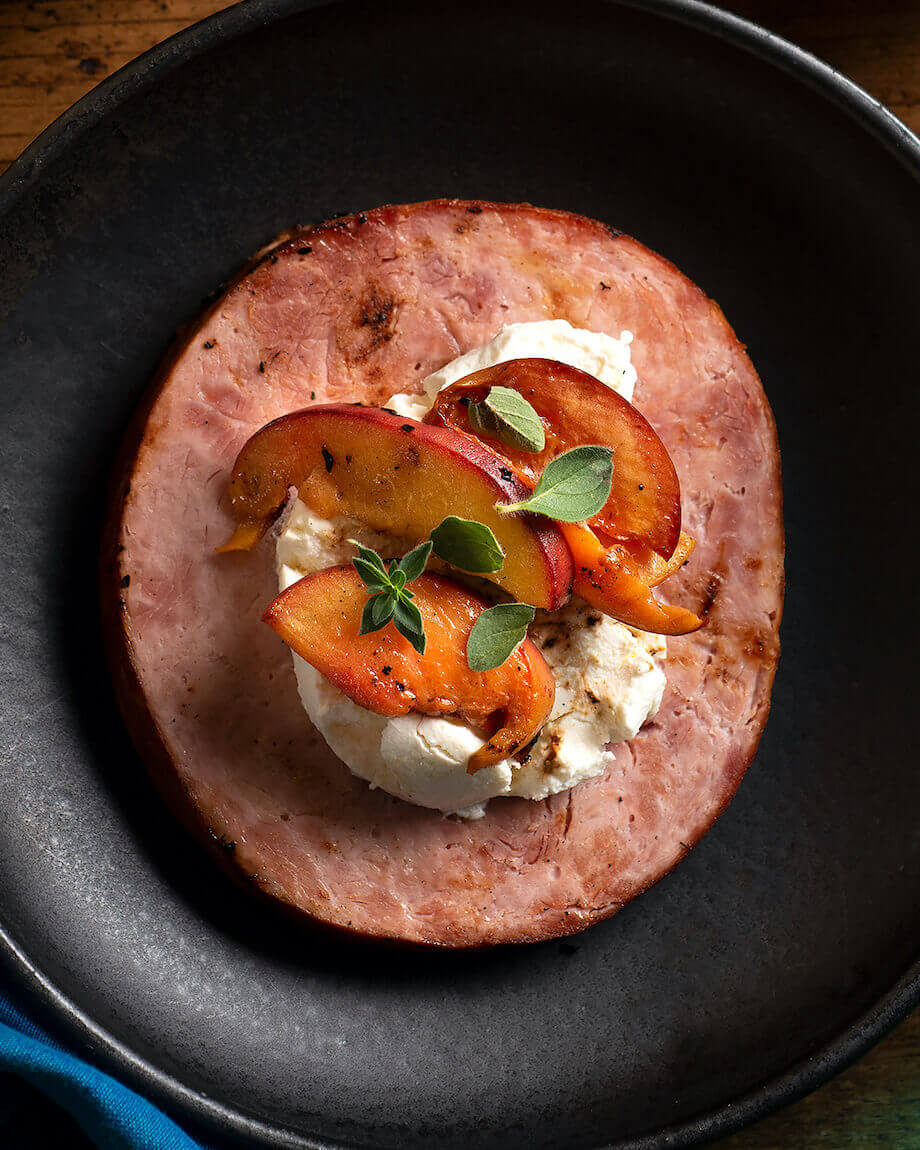Plenty of people think of pork when they want a delicious weeknight meal for the whole family. You can quickly air fry hickory smoked bacon for loaded egg sandwiches or sear a few boneless pork loin chops with your favorite seasonings. Either way, pork will keep everyone full for hours.
Aside from that, all-natural pork that doesn’t have any added hormones or chemicals tastes better and is better for you and your family.
However, there are many different pork cuts available. Which one is best for you? What are the easiest and most convenient ways to cook these pork cuts? Let’s read our essential guide that covers these important topics. Table of Contents.
Pork lovers, rejoice! While all cuts of pork offer succulent flavor, some boast exceptionally high fat content for ultimate decadence. If you’re seeking cuts so rich they glisten, look no further. We’re detailing the fattiest pork cuts for inspiring indulgence. Say yes to fat and no to bland!
The Allure of Fatty Pork
Let’s appreciate why fatty pork hits the spot. The extra fat means:
-
Intense, porky flavor from high levels of tasty, nutritious monounsaturated and saturated fats
-
Irresistible mouthfeel as the fat coats your tongue
-
Juicy tender meat after cooking as fat keeps it moist
-
Satisfying richness perfect for special occasion feasts
-
Crunchy crackling skin when roasted – fat = flavor!
While moderation remains key, don’t deprive yourself of these delights in paradise. Embrace the fatty cuts on occasion.
Top Sources: Where’s the Fat?
All pork contains some marbled fat. But three areas deliver the ultimate in rich, indulgent cuts:
1. Side and Belly
This underside area is the bountiful source of two icons of fatty pork:
-
Bacon – Smoky, salty cured pork belly is breakfast bliss
-
Spareribs – These flavorful ribs are cut near the belly
With alternating fat and lean, bacon and ribs score big on taste.
2. Shoulder
Moist cooking methods suit the higher fat shoulder joints:
-
Boston butt – For pulled pork or roasts
-
Picnic shoulder – Makes fabulous sausages
The fat keeps shoulder meat tender during slow cooking.
3. Back
The pig’s top contains its thickest layer of fat:
-
Back ribs – More tender and fatty than spare ribs
-
Fatback – Cured and thick-sliced fat for flavoring
Perfect for rich stews or adding to leaner cuts.
By the Numbers: Fat Content Revealed
Here’s how the fatty cuts rank for total fat content:
-
Fatback – 90% or more fat
-
Bacon – Around 55% fat
-
Spareribs – 30% fat
-
Shoulder – 20% fat
-
Back ribs – 15% fat
Compare that to extra lean cuts like tenderloin at only 2% fat. It’s a pork fat bonanza!
Choosing Cooking Methods
Maximize the luscious fat by selecting cooking techniques to render or crisp it:
-
Roasting – Yields ultra-crispy roast pork skin
-
Grilling – Allows fat to drip away while charring meat
-
Braising – Slow cooking transforms fat into liquid gold
-
Smoking – Draws out fat over low heat for melt-in-your-mouth ribs
Serving Up Succulence
Once cooked, savor fatty pork cuts by:
-
Slathering ribs in sticky barbecue sauce for finger-licking fun
-
Piling pulled pork high on soft rolls to soak up the juices
-
Topping baked potatoes with crisp bits of pork crackling
-
Filling omelets with diced bacon and melty cheese for a hearty breakfast
-
Tossing cubed fatback into bean soups for added richness
While all pork delivers flavor, opting for fattier cuts like bacon, back ribs, and shoulder truly brings the texture, moisture and indulgence. Cook low and slow, or roast and grill to achieve crispy, crackly perfection. In moderation, embrace the richness of fatty pork for scrumptious feasting!

Center Cut Loin Roast
Want a fancy dinner on Sunday night? The center cut loin roast is one of the most popular types of pork roast. It usually has a big fat cap that makes it taste even better.
For those who don’t want to grill it, all you have to do is season it with salt and pepper and let it cook slowly in the crockpot. For some added crunch, you can even throw in some red apples alongside the roast.
If you go to a holiday potluck or fancy meal, pork leg is probably going to be one of the main courses. Pork leg is where traditional hams (fresh, spiral-sliced, country, etc. ) produce salty cured meats like prosciutto, a tasty pork treat that goes well with spring salads or creamy pasta dishes.
Since most hams are quite large in size, the best cooking method here is roasting low and slow. Needless to say, many pork leg cuts won’t generate an instant meal like the pork loin. Here are some of the most sought-after pork leg cuts:
One of the tastiest proteins to add to a sandwich, loaded soup, or stew is ham steak. Coleman Natural’s Uncured Ham Steak is a quick and easy meal that can be ready in minutes. It can be eaten hot or cold and doesn’t have any antibiotics, hormones, or artificial ingredients. This specialty steak is slow-smoked over seasoned applewood, which gives it an unparalleled flavor!.
If you want to eat tasty ham but don’t want to deal with carving each piece, spiral ham is the easiest option. Coleman Natural’s Applewood Smoked Uncured Bone-In Spiral Ham has already been cut into slices that match the shape of the whole ham, so each one you serve is the same.
Also, cultured celery powder and sea salt are used to make it, which are natural preservatives that let the ham’s strong flavors shine through. Set the oven to 375 degrees Fahrenheit and bake it for 10 to 12 minutes per pound. It’s already fully cooked. If your dinner guests don’t finish the whole ham, you can have leftovers for the week too!.
This Southern delicacy is a household favorite for many—as it’s dry-cured and salty—producing extremely complex flavors. To get the best results, country ham is usually roasted with the low and slow cooking method. Many country ham lovers choose to serve alongside mashed potatoes, crunchy vegetables, and fluffy buttered biscuits.
Baby Back Pork Ribs
It is the backbone that gives All-Natural Baby Back Pork Ribs their name. They are very tender and come from the same part of the animal as pork loin chops. Usually, a full rack comes with at least eight ribs—plenty of meat to feed a medium-sized, hungry crowd!.
Baby back pork ribs taste best when cooked on a grill, but be careful not to let them dry out during the cooking process. You can quickly make a spicy rub mix, cook them in the air fryer, and cover them in your favorite BBQ sauce if you have about 30 to 35 minutes to spare.
This Is The Worst Cut Of Pork You Can Buy
FAQ
Which is the best cut of pork?
What is the healthiest cut of pork?
Which is fattier pork loin or shoulder?
What pork chops are the fattiest?
What is a good cut of pork?
Pork Shoulder: This affordable cut can be sold bone-in or boneless. It is rich in fat and connective tissue. Blade Chop: Cut from the shoulder end of the loin, these chops can be difficult to find at the market. They are fatty and tough, despite good flavor and juiciness.
What meat is cut from a rib roast?
Steaks cut from a rib roast are pork loin chops or pork rib chops. Pork Top Loin Roasts are created by the butcher by tying two top loins together with the fat sides out. Pork Sirloin Roasts (a.k.a. loin pork roast, pork hipbone roast, pork loin end roast) are lean but less expensive than pork tenderloins.
What is the most tender cut of pork?
The tenderloin is often revered as the most tender cut of pork. It is a small strip, weighing roughly 1 pound. The tenderloin comes from the muscles of the pig stemming from the back of the leg and above the ribs. It almost never gets much strain, so it’s muscle fibres are thin, with very little fat.
What cut of pork is used for pulled pork?
Pork butt is the most common cut used for pulled pork, but the others can be used too. These cuts have a lot of fat on them, so if you are buying from your butcher, ask if you can keep the fat on them. You can trim the fat and use it for a million things in your kitchen, or leave it on the meat for extra flavour.
